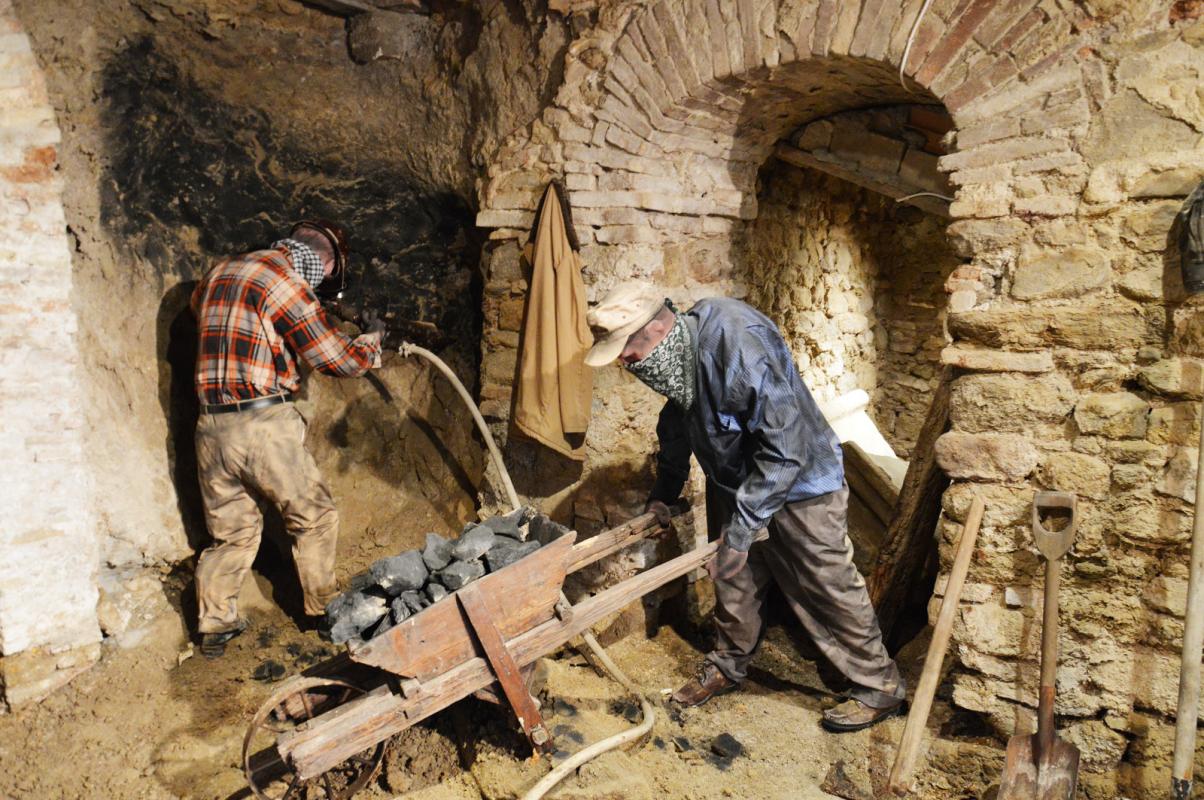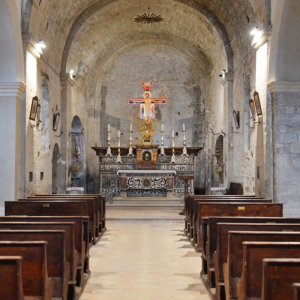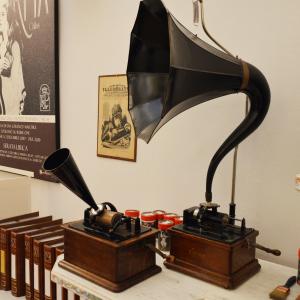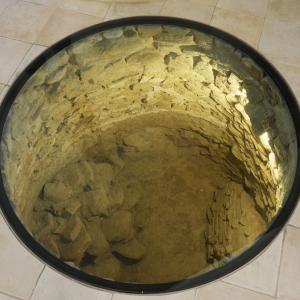Sogliano al Rubicone, the town that speaks
Khalil Gibran wrote: “If you could sit on a cloud, you would not see the borderline between one country and another, nor the dividing line between one farm and another. What a pity you cannot sit on a cloud."
Sogliano al Rubicone is just outside the borders of the Rimini Riviera, but if we imagine ourselves sitting on that cloud, this journey can truly be a source of emotions.
First things first, let's start from the "where".
We are in the province of Forlì Cesena, just north of the Rimini Riviera, in a place somewhat suspended between the Adriatic Sea and the Apennines, which in itself deserves a visit even if only for the landscape, the architectural beauties, the monuments, the hamlets, museums and village events.
And yet, moving from the "where" to the "why", there are so many reasons to visit Sogliano al Rubicone.
Sogliano is a city that speaks and does so through the voice of its inhabitants who, over time, have built small treasures to visit and learn about, museums and permanent exhibitions, the fruit of the passion, interest, study, and archiving of men with immense hearts.
Can there be anything more real and exciting than all this?
If we talk about history, the Linea Christa Museum was created in 2006 thanks to the work and study of some Sogliano collectors who joined together in an association and collected war materials used by the armies during the Second World War.
The guide who opens the doors of the museum is even better than a history book and accompanies you on a journey that retraces one of the most difficult periods for the town, recreating an audio sequence inside a cave that reproduces the roars of the 1944 air raids.
However, Sogliano also celebrates ancient history and does so with a museum dedicated to Leonardo da Vinci who traveled through Romagna in 1502 following Cesare Borgia.
Here too, it is the guide's story that makes the difference, together with copies of Leonardo's manuscripts which documented an extraordinary panorama of the Romagna Renaissance and an ethnographic section with the uses and customs of this tradition.
And again thanks to the talent and passion of the people of Sogliano, the Mining Museum was also created.
So as not to forget an important piece of history, Marco Pellegrini and Pier Raffaele Palmi - two authentic inhabitants of Sogliano – were the ones whose desire was to establish an Association for the study and enhancement of the coal mines of the area which represented an important source of livelihood for the entire town from the early 1800s to the early 1900s.
Work of research and analysis that continues still today with great enthusiasm and passion.
The journey through the museums could even end here, but there is truly no end to the resources and interests of the inhabitants of Sogliano.
Like those of Roberto Parenti, who as a boy was called to go and clean the basements and attics of houses in Bologna. He didn't get paid, but he could take home whatever he liked. It was during that time that he learned to store and keep ancient objects in order and thanks to his collections, two other museums sprang up.
The Museo del Disco d’Epoca (the Vintage Record Museum) is an ode to the evolution of sound recording and includes, in addition to 50,000 vinyl records, most of which are cataloged, phonographs, gramophones, Pathè records, guitars autographed by Bruce Springsteen, terracotta statuettes representing the most famous characters in musical history.
And we could stop here as well, as we are already full of so much artistic and cultural heritage.
But a few meters away from this world made of music and notes, the journey continues in another museum, called the Museo di Arte Povera (The Museum of Poor Art), which looks like anything but something called "poor."
It is truly a unique, one-of-its-kind collection, where alongside books and ancient codices there is an inestimable collection of Valentine love cards, eighteenth-century calendars, Art Nouveau posters, extremely refined pop-ups and precious Art Deco prints.
Finally, as we are in Romagna, it is a must to talk about food and traditional customs.
Let's start with Fossa cheese, whose origin dates back to the second millennium BC, to then develop in Roman times and in the Middle Ages.
In Sogliano, many families produced and preserved the cheese in the pit, a tradition that over time has become a local characteristic.
In 2009 Fossa cheese was awarded the DOP (Protected Designation of Origin) as a unique and inimitable product.
Since 1974, the opening of the pits has brought back memories of the tradition of the so-called ''sfossatura'' with a fair that brings the whole town to life.
And since in Romagna, when there is mention of food, the piada (a type of bread) cannot be neglected, and Sogliano al Rubicone has something to say about this product, too.
The Tegliaio di Montetiffi workshop is certainly worth a visit; it carries on the centuries-old art of producing pans for cooking piada using exclusively handicraft methods, starting from the processing of a clay block until it becomes the tinkling plate where the Piada is cooked. From the pan workshop to the Montetiffi Abbey, it is just short walk of a few minutes, and you find yourself in a hamlet of great naturalistic and historical-artistic value.
Inside the Abbey of San Leonardo there is a built-in tanning stone that dates back to the 11th century, frescoes from the 14th-century Rimini school, a baptismal font from the 17th century, and epigraphs from the 14th century.
What else can we say?
When you leave Sogliano al Rubicone, you will take home an extraordinary tale of passions, love for the area, endless hospitality, the desire to travel again, horseback rides and laughter, culture and folk wisdom, the taste of PDO fossa cheese, the endless history of the piadina and the pans to bake it in, and hands that grip the stone to climb a 12th-century bell tower about which we have already said everything we know.
For information
Tourist Office Municipality of Sogliano al Rubicone
Republic Square, 35
Tel. 0541.817340
touristoffice@municipality. sogliano.fc.it
https://www. visitsoglianoalrubicone.it/



